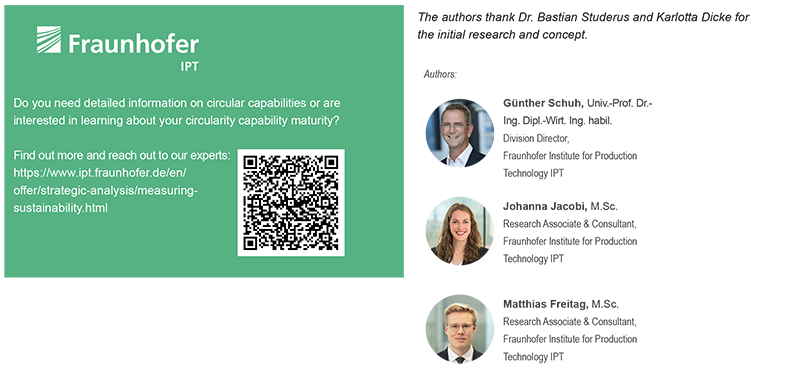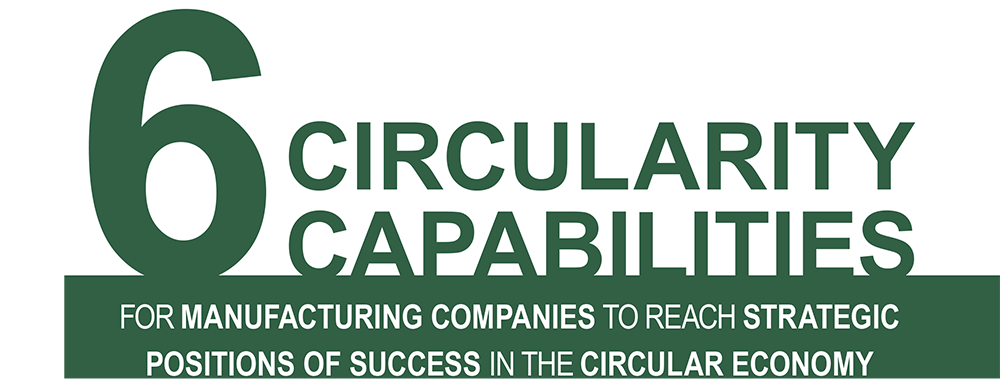
Manufacturing companies face the challenge of systematically identifying and leveraging technological competitive advantages during the transformation to the circular economy. Therefore, companies need to take up strategic positions of success in the circular economy by correctly bundling their technological resources and capabilities. However, capabilities for the circular economy go beyond those currently required for companies to establish a successful market position. These new capabilities differences specifically manifest through the perspective of considering a product’s full life cycle and the potential arising from not yet tapped life cycle phases.
Following this challenge, manufacturing companies are tasked with the question:
Which circularity capabilities are crucial to unlock new circular value potentials and thus act as strategic positions for success?
To answer this question, circularity capabilities were systematically derived from literature and validated by industry partners during the development of the Circularity Capability Assessment in a joint project between Fraunhofer USA Center Mid Atlantic (CMA) and Fraunhofer Institute for Production Technology IPT. The six key capability areas that enable companies to achieve strategic success in the circular economy are described in detail below.

The increasing number of sustainability regulations is one of the major challenges of the transformation to a circular economy. Thus, when developing new technologies and products, it is relevant to strategically consider regulatory requirements as early as possible. Therefore, companies need the ability to anticipate new regulatory requirements and interpret their significance for their value creation. Furthermore, cooperation with regulatory institutions and participation in the development of standards allow companies to shape existing and new regulations.
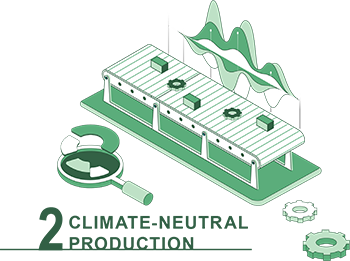
Climate-neutral production enables the manufacturing and processing of products in a greenhouse gas-neutral manner. This is achieved by increasing the resource efficiency of existing production processes and by utilizing new climate-neutral production technologies. In addition, companies can increase their energy efficiency by purchasing energy from renewable sources or by feeding of industrial waste heat into a district heating network. Thus, this capability is closely linked to an energy transition.
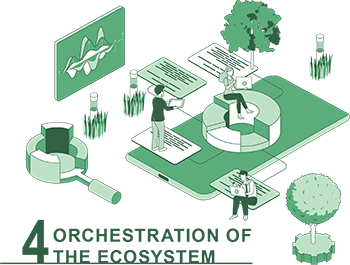
Life cycle oriented product innovation focuses on the design and development of products for the circular economy to reduce emission over the entire life cycle. The basis for such innovation is a modular product architecture. Modular designed products ensure, among other things, the recyclability of products, the reuse of certain product components in other applications as well as the realization of product upgrades. The implementation of product upgrades also requires the creation of a new infrastructure for the market-centered remanufacturing of products. In addition to a modular product design, companies should use recycled materials across different supply chains and industries or use regenerative materials in products to ensure closed material loops.
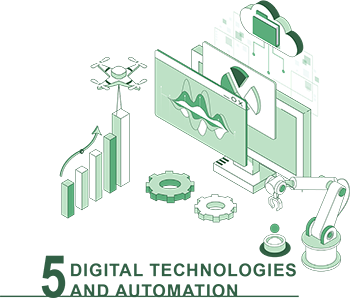
To cycle products in continuous value creation between customers and companies and achieve the overall goal of decoupling the economic activity from its environmental impact, there is a high need to orchestrate a multitude of activities and interests. Centrally, to orchestrate these Re-Xcycles of products, companies need to create an ecosystem of enabling partners and a reverse logistics network. The key challenge in this area is that companies’ core competencies don’t always match the necessary abilities to carry out all the steps within a circular economy on their own. Thus, companies need to strategically navigate supply chain agreements and foster resource-sharing partnerships for efficiency-boosting synergies and collective innovation.
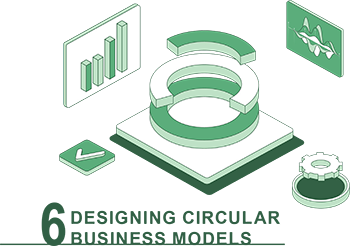
Digital technologies act as enablers to enhance product and production transparency. They drive the advancement of production through the integration
of autonomous systems and real-time data insights, improving efficiency and decision making. Employing digital twins of a production as well as a digital product pass allow comprehensive material disclosures, ensuring accountability via full traceability throughout production and use, and leveraging data analytics to diagnose product condition.

Circular Business Models unlock new revenue potential through innovative product service bundles, the redefinition of business models and distribution for economic growth independent of resource use. The creation of customercentric value propositions with services promotes an active participation in the circular economy. Enabling these skills in the monetization of products over multiple use cycles through upgrades, refurbishment, and replacements is a foundation of circular market intelligence that allows the business model design to always reference relevant customer requirements.
Manufacturing companies need to be aware of their existing circularity capabilities in order to be able to build new capabilities and to unlock new circular value potential. The developed Capability Maturity Assessment enables manufacturing companies to assess the maturity level of their circularity capabilities as part of an expert interview. The resulting maturity level can be compared with the benchmark of a growing peer group consisting of previous participating companies. A gap analysis is used to identify companyspecific capabilities that need to be built to secure competitive advantages and to be able to take up strategic positions of success in the circular economy.
